As a physician, maybe you have had this experience:
Patient “Blurry Eyes” sits in the exam room looking like she has been up all night. In fact, she has. After several hours of Internet mining, posts on well-meaning health and medical sites have kept her awake for the last 14 hours with impersonal information about various symptoms she is experiencing related to her heart. Now, she has come to you prepared for bad news.
Fortunately, as the cardiologist diagnosing her condition, you also have a technological resource that frames Dr. Web’s broad approach. Ms. Blurry Eyes relaxes. And beginning with three taps on a new iPad application called Cardio-Visual, you teach her more about what her symptoms mean in 10 minutes than she could possibly learn in hours of scavenging the web.
The Cardio-Visual iPad app offers professionally produced videos and graphic presentations explaining most cardiac and cardiac-related conditions, diagnostic and treatment procedures, and demonstrations of devices available to correct them. Also, physicians can draw on screen displays for highlighting information regarding the patient’s personal condition.
“The bottom line is the patient is getting the right information from the right source: the trusted physician vs. Dr. Web”– Dr. Manish Chauhan, with the Cardiovascular Specialists of Texas (CST) in Austin
The Cardio-Visual app, currently for iPads only, is available for $30 from the iTunes app store. The cost is recovered quickly, as it is priced less than Medicare’s reimbursement for one patient office visit. Medicare usually pays about $49 of a $70 physician evaluation, according to a 2014 article by Modern Healthcare.
Dr. Manish Chauhan, with Cardiovascular Specialists of Texas (CST) in Austin, envisioned the Cardio-Visual iPad app, found a team of developers and launched it this past February. “The bottom line is the patient is getting the right information from the right source: the trusted physician vs. Dr. Web,” Chauhan says. Once downloaded onto an iPad, the tutorial begins in three easy taps.
With the first tap, the icon opens the app. The physician sees a sidebar of heart issue related categories: cardiac, electrical procedure (EP), structural and vascular. The second tap on the appropriate category displays several related conditions, and the third tap on the patient’s diagnosed condition initiates the lesson. A menu bar at the bottom of the screen breaks down information further into sub-categories: condition, procedure, device and “draw-on.”
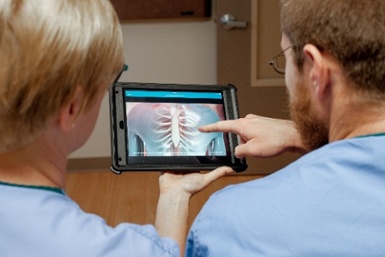
Using videos and graphics, “condition” features an overview of the issue. “Procedure” describes any necessary procedures or testing required for a more complete assessment. “Device” reviews the treatment instrument used and provides a demonstration of how it works. And, to finish, a “draw-on” option allows the physician to highlight the location of the patient’s problem on a graphic illustration and further elaborate specific treatment details.
Several of Dr. Chauhan’s Austin colleagues praise Cardio-Visual as the modern technological source of improved communication for patient education, satisfaction and inclusion.
Jayne King, Director of Heart and Vascular Care at St. David’s North Austin Medical Center (NAMC), notes that brochures and heart models were their teaching tools before the availability of Cardio-Visual. She adds, “Sometimes, the physician would draw a picture on a piece of paper.”
“The app is a much better tool,” King says. “Patients can hear and see it. The other tools were stagnant. We live in a world where people expect technology to be available.” King reports they use the app daily.
“In my opinion, it has taken patient education and satisfaction to another level”– Jayne King, Director of Heart and Vascular Care at St. David’s North Austin Medical Center (NAMC)
Cardio Texas physician Dr. Edward Chafizadeh says he also uses Cardio-Visual daily. “Patients love the app. I love it too. I appreciate the clarity of the descriptions and explanations, and the fact that it has great visual graphics for patients. I feel it allows me to give excellent information to patients and their families,” Chafizadeh says.
Dr. Mark J. Pirwitz, Seton Heart Institute President and CEO, has a similar observation adding, “Although each video clip is relatively brief, it provides enough information to assist patients in formulating appropriate questions about their care.”
Cardio-Visual offers a library of 60 videos, each less than two minutes long. Sixteen different companies supplied the productions, most of which have subtle commercial references.
Nevertheless, Dr. Chauhan believes the selected videos are the best presentation available on featured subjects. “We are open about where the information is coming from, and we are fortunate that most companies gave us the copyright. They see the value of physicians presenting information that helps the patient. They know that the patient is more likely to understand the information if the doctor guides them than if they go to the company’s website. The idea is not to be commercial, but to create an educational tool,” Dr. Chauhan says.
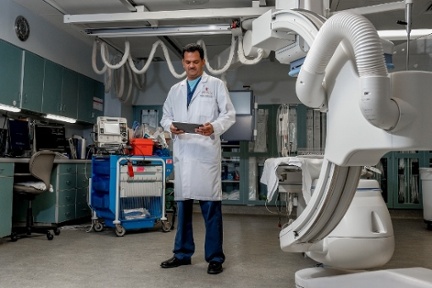
While patient and physician communication has been a long-time concern among healthcare providers, Dr. Chauhan notes it is now also a metric for linking payer reimbursement to hospitals and, soon, to all physicians.
That is another reason the app is such good news for NAMC Heart and Vascular Care. King says, “In my opinion, it has taken patient education and satisfaction to another level. There is no mystery in what we are going to do when the patient is taken to a scary, cold, sterile procedure room. The patient’s fears are alleviated for the most part when they understand what and why they are having their procedure done.”
King reports that patients say things like:
- “I was really scared. This does not seem so bad now that I have watched this.”
- “This answers all my questions.”
- “I feel informed on the procedure I am having.”
For all the sophisticated medical tools at his disposal, Dr. Chauhan says Cardio-Visual is the link he, himself, missed in patient education. He says, “I was asking patients to imagine things that many of them had never thought to imagine. Physicians want to educate their patients, but we have not had the right tools.”
Dr. Robert Wozniak, a physician with Dr. Chauhan at CST, agrees. “How people learn now is so visual. I do not know of any better way to communicate like the app lets me communicate,” Wozniak says. “In the case of sleep apnea, once the patient sees the video, they understand what a life-threatening issue it is.”
“There is a lot less confusion, and patients feel more secure and confident”-CST Nurse Practitioner Neva Schmelzer
Another communication barrier Cardio-Visual breaks through is language. “I have patients that do not speak English. The app is particularly useful when I try to talk to them,” Dr. Wozniak says.
“Patient’s families are appreciative too,” comments CST nurse practitioner, Neva Schmelzer. “They are often the recipient of information because the patient feels poorly and may not take in the information well.”
“Health communication is really important to me,” Schmelzer says. “The app is a really good visual tool. There is a lot less confusion, and patients feel more secure and confident.”
“Research shows that if you do not educate patients,” she says, “they are less likely to follow your advice. We know that you get better outcomes when the patient feels included.”
And, because Cardio-Visual is available electronically, it can be accessed repeatedly at the convenience of both the patient and family for re-education and reminding.
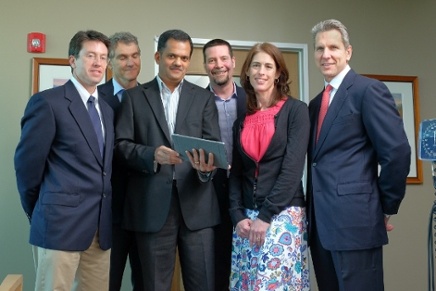
Dr. Chauhan’s colleagues are so pleased with the Cardio-Visual app that they are anticipating further developments. Dr. Chafizadeh says, “I think the average patient really has a thirst for knowledge about heart disease.”
“I love the app,” he adds, “and look forward to continued add-ons for additional procedures, disease states and pharmacologic information on heart disease.”
Dr. Pirwitz says, “Patients have been uniformly appreciative and responsive to the app. I believe the procedural videos are particularly helpful, and it would be beneficial to have additional disease-specific videos with treatment options in the future.”
Fortunately, Dr. Chauhan, who had dreams of being an engineer when he was young, has future ambitions for the Cardio-Visual app. He would like to make it a better communication platform, getting more timely information to doctors faster with more precise features on both procedures and medications. “We are looking at it no longer as just a tool, but I would like to add more content and get patient feedback,” Dr. Chauhan says.
To download Cardio-Visual, visit the app store on iTunes or, for a quick overview, visit www. Cardio-Visual.com. A three-minute demonstration is also posted on YouTube and can be found by searching for “Cardio-Visual iPad App.”
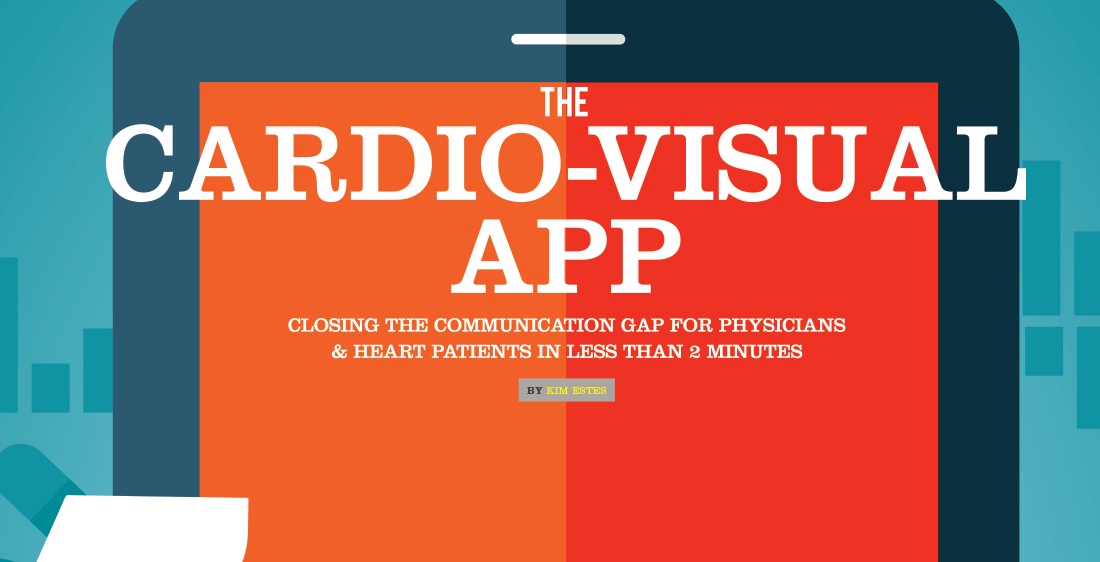



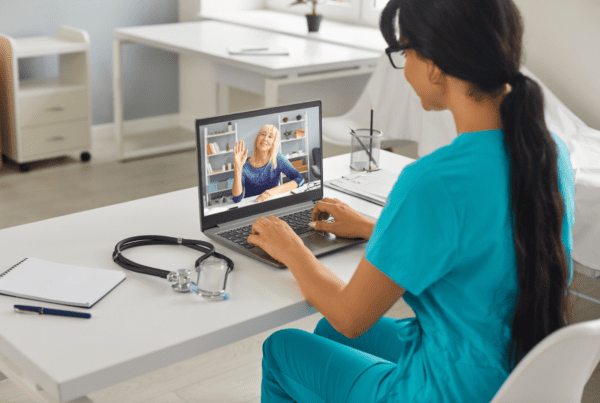


Recent Comments